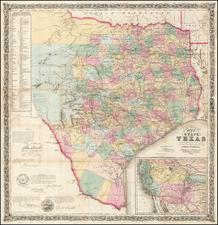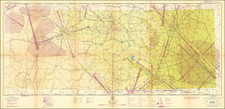Fine example of this striking political cartoon, which appeared in the June 12, 1886 edition of The Wasp.
The cartoon is intended to demonstrate how the US Government was taking better care of Indians than non-Indian Citizens of the US. The image was recently featured in an exhibition of images of Native Americans called "Mass Market Appeal," in which the image was described as follows:
The unknown artist compares "The Indian Breathing Ground," identified as the Fort Berthold Reservation and its 22,250,000 acres with "A Breathing Spot for the Whites" depicted as a filthy collection of urban tenements amidst a chemical factory. Similarly, a smiling Indian figure holding several scalps is seen to enjoy an allocation of land at "One Square Mile for Every Savage," while city dwellers are faced with living quarters at "One Square Foot For Every Inhabitant."
In yet another comparison, a hardworking farmer appears in a sketch entitled "White Settler Earns His Bread by the Sweat of His Brow," while a group of greedy Indians line up to receive free food and goods from "Uncle Sam." This cartoon is labeled "Indian Demands his Bread by the Size of His Cheek."
Geronimo (jur-ahn'-i-moh), or Goyathlay ("one who yawns"), was born in 1829 in what is today western New Mexico, but was then still Mexican territory. He was a Bedonkohe Apache (grandson of Mahko) by birth and a Net'na during his youth and early manhood. Because he fought against such daunting odds and held out the longest, he became the most famous Apache of all.
To the pioneers and settlers of Arizona and New Mexico, he was a bloody-handed murderer and this image endured until the second half of this century. In May 1882, Apache scouts working for the U.S. army surprised Geronimo in his mountain sanctuary, and he agreed to return with his people to the reservation.
After a year of farming, the sudden arrest and imprisonment of the Apache warrior Ka-ya-ten-nae, together with rumors of impending trials and hangings, prompted Geronimo to flee on May 17, 1885, with 35 warriors and 109 women, children and youths. Geronimo surrendered (Mar. 25, 1886) to Gen. George Crook, but fled once more and he finally surrendered to Gen. Nelson Miles on Sept. 4, 1886.
Geronimo's final surrender in 1886 was the last significant Indian guerrilla action in the United States. At the end, his group consisted of only 16 warriors, 12 women, and 6 children. Upon their surrender, Geronimo and over 300 of his fellow Chiricahuas were shipped to Fort Marion, Florida. One year later many of them were relocated to the Mt. Vernon barracks in Alabama, where about one quarter died from tuberculosis and other diseases.
Geronimo died on Feb. 17, 1909, a prisoner of war, unable to return to his homeland.
A fantastic example of this provocative image.
The Schmidt Lithography Company was based in San Francisco. Max Schmidt, a German immigrant, founded his first printing business in 1873, and he was one of the first printers to use lithography on the West Coast. His plant burned twice, in 1884 and 1886, but by the 1890s he ran a factory in San Francisco, as well as branches in Portland and Seattle.
During the 1906 earthquake and fire the company’s premises were destroyed again. Schmidt quickly acquired a nearby paper factory and production continued practically uninterrupted. Within two years of the fire, Schmidt had rebuilt on the site of his former factory at the corner of Second and Bryant Streets.
Schmidt’s company was best known for its printed labels, but they also produced other items like separately-issued prints. The company was once the largest printing company on the West Coast and today they are remembered for the clock tower that still stands at Second and Bryant Streets.









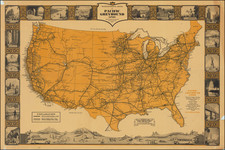
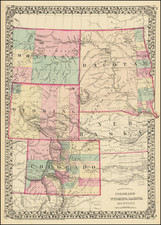
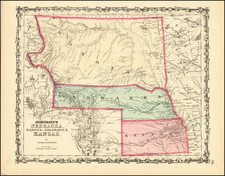
![(Nuremberg Chronicle) [Geneology of the Virgin Mary]](https://storage.googleapis.com/raremaps/img/small/98722.jpg)
